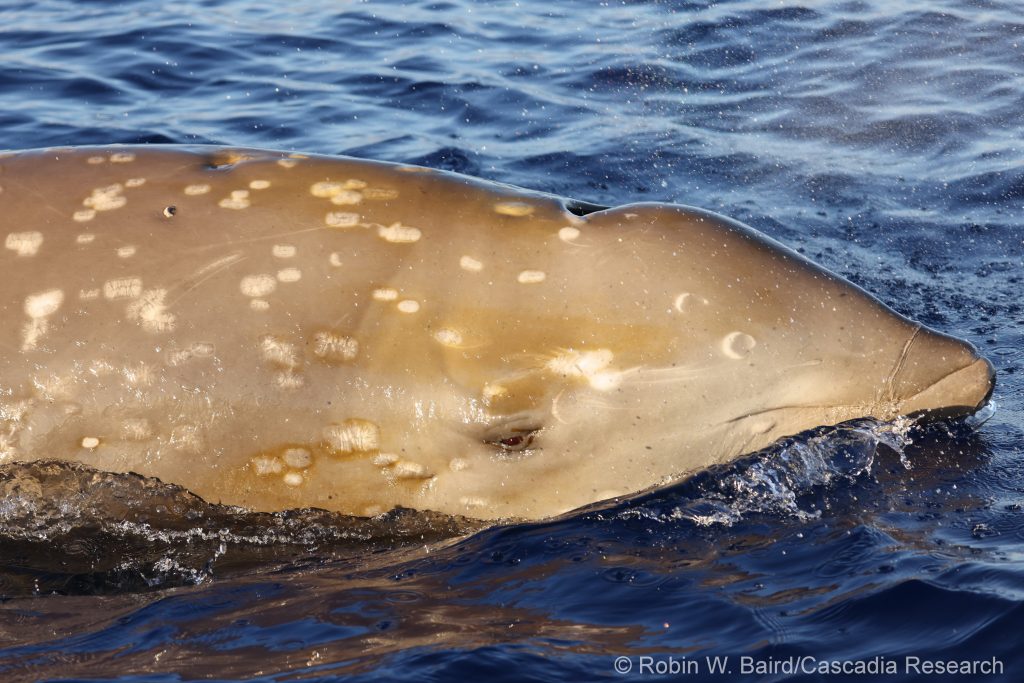
We are conducting a short (8-day) field project off Kona from October 16-23. This is the 23rd consecutive year of working off Hawaiʻi Island. While we'll be primarily searching for false killer whales, our highest priority species, and beaked whales, we'll be working with all species we encounter, obtaining photographs for individual identification, samples for genetics and other studies, and deploying LIMPET satellite tags on a small number of individuals. In an eight-day project we are likely to encounter 8-10 different species of toothed whales and dolphins off the island. As of October 6th, we still have one satellite tag transmitting on a goose-beaked whale (the individual shown above, an adult female) that was tagged during our November 2023 project, and if the tag is still transmitting in October we hope to re-locate the individual and get follow-up photographs, as well as potentially deploy tags on any companion individuals. This project is funded by grants from the Pacific Islands Fisheries Science Center of NOAA Fisheries (focusing on false killer whales), and the Office of Naval Research (focusing on beaked whales).
If you are going to be on the water off Kona during this period, please contact us if you see false killer whales, killer whales, sperm whales, pygmy killer whales, or beaked whales! For more information on the project, contact Robin Baird at rwbaird (at) cascadiaresearch (dot) org
End of project update
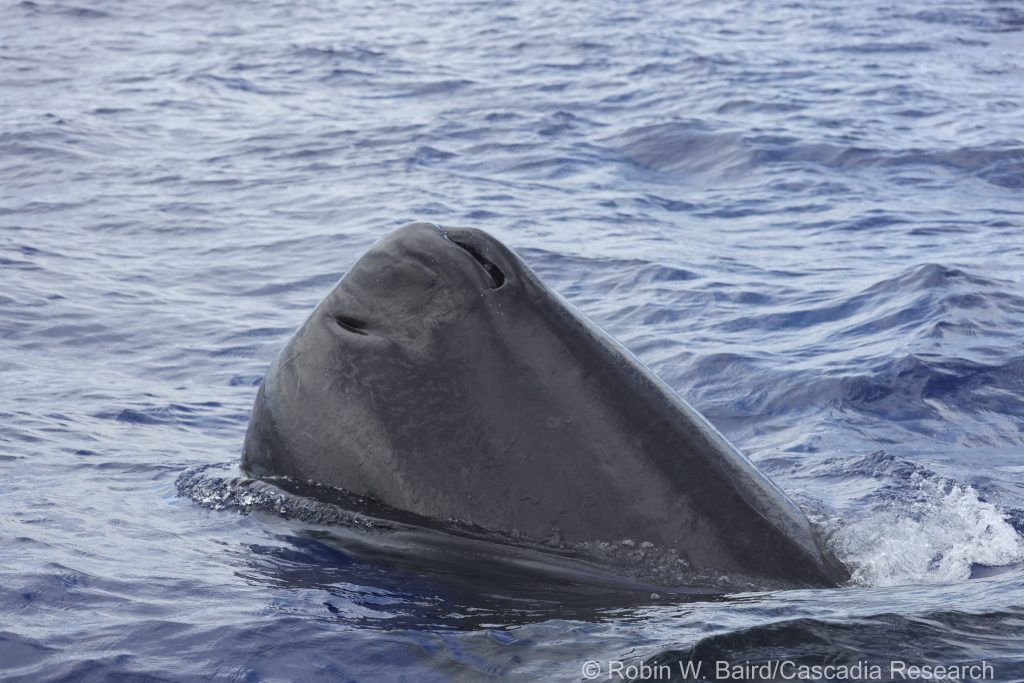
Over the 8-days on the water we covered 1,514 km off Kona and had 21 sightings of nine different species of cetaceans, took 22,880 photos (and a few videos), had 15 different volunteers out with us, and collected one biopsy sample and one fecal sample.
On our last day out we encountered two new species for the trip. The most productive encounter was with a group of about 16 sperm whales out in deep water. In addition to one biopsy sample, we were able to obtain about seven fluke ID photos. One of the individuals, pictured above, briefly showed interest in our boat and approached us.
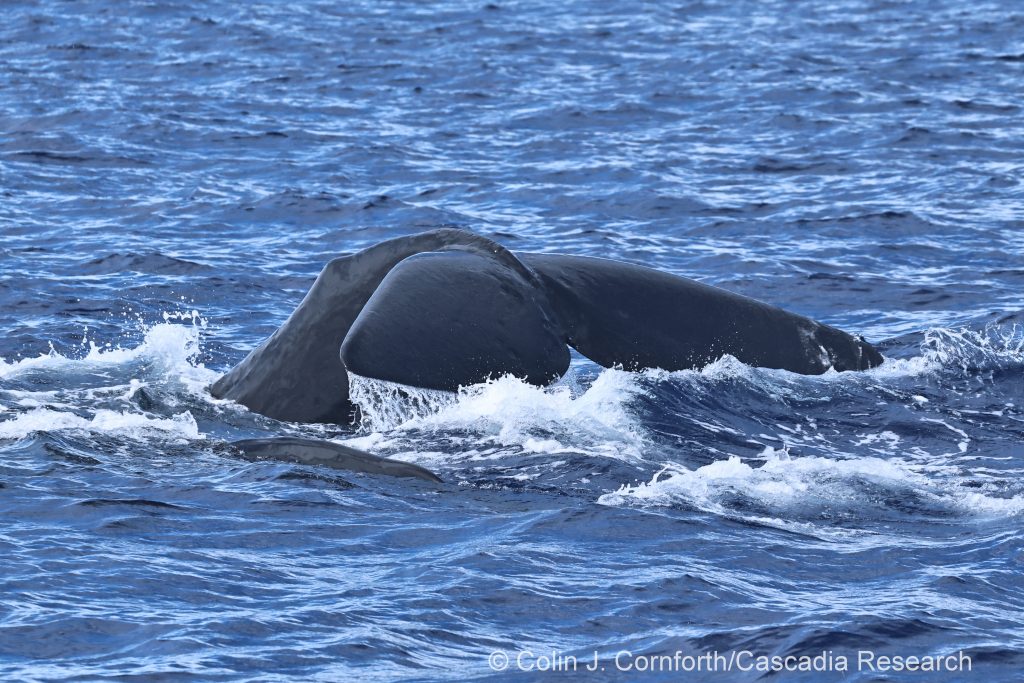
The sperm whale group was spread out over many kilometers, and primarily included females, juveniles, and at least one calf - you can see part of the calf's body visible just in front of this fluking female
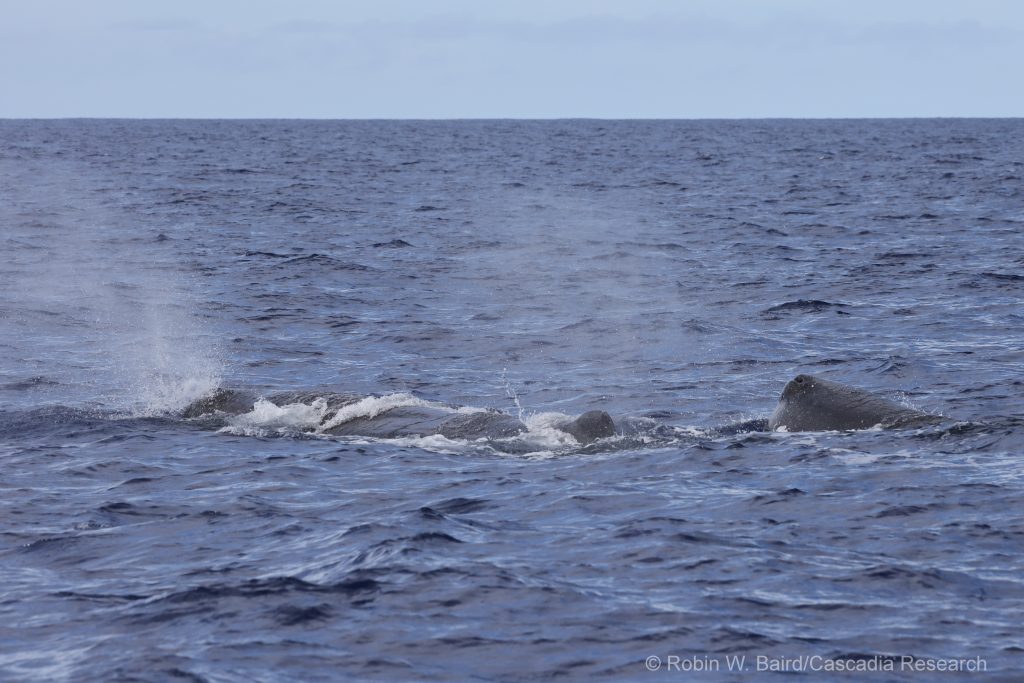
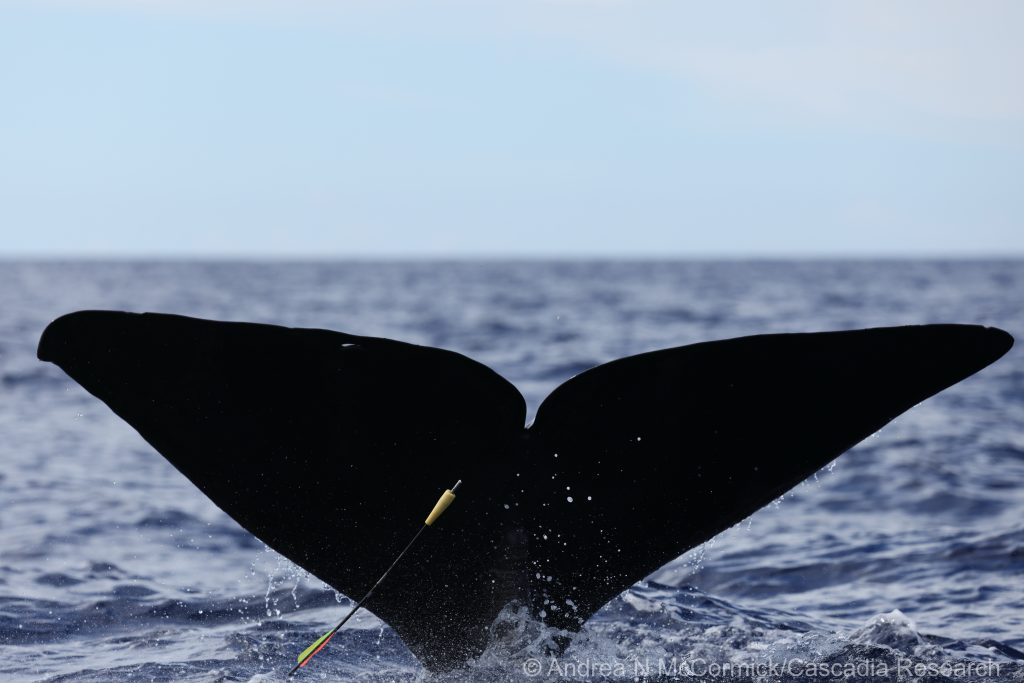
We try to collect biopsies from sperm whales from the underside of the tail flukes, so that we can match the sample with the individual. The photo above shows the biopsy arrow just after it has bounced back. This sample is subdivided with 1/3 of the skin going to the Southwest Fisheries Science Center for genetic analyses, and the remainder of the skin and blubber going to the University of Hawai'i.
October 22 update
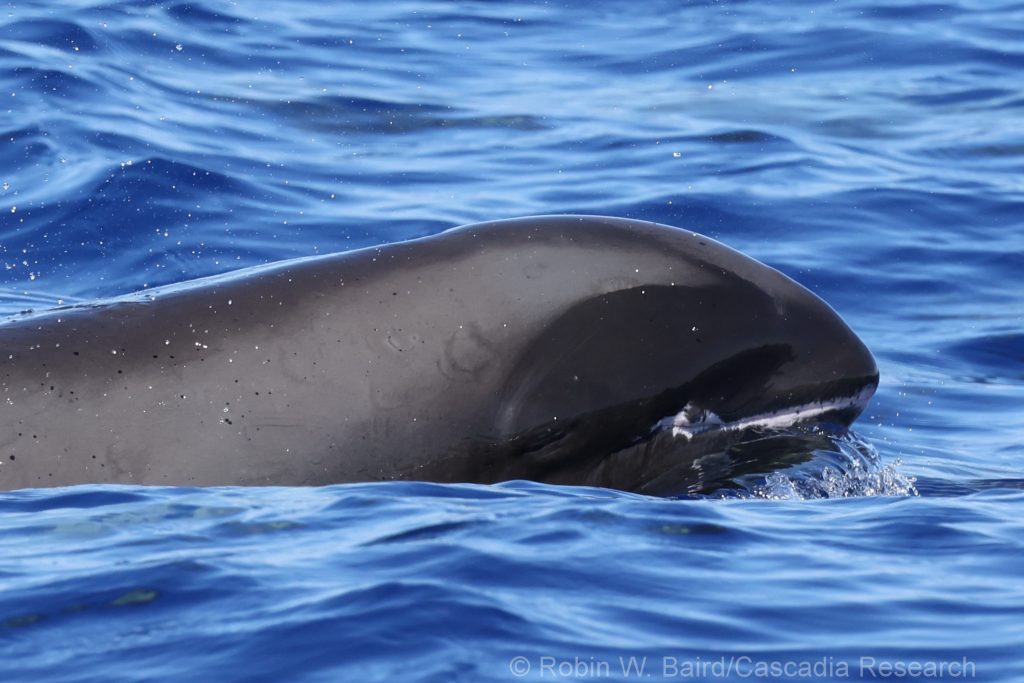
Over the last few days we've encountered several new species of odontocetes for the trip, including a group of a couple hundred melon-headed whales. There are two different populations of melon-headed whales recognized in Hawaiian waters, a Kohala resident stock, found off the north end of Hawai'i Island, and a Hawaiian Islands stock. The Hawaiian Islands stock moves broadly among islands and offshore and is found in much deeper water than the Kohala residents - given where we found them, in deep water, we suspect this group is from the Hawaiian Islands stock.
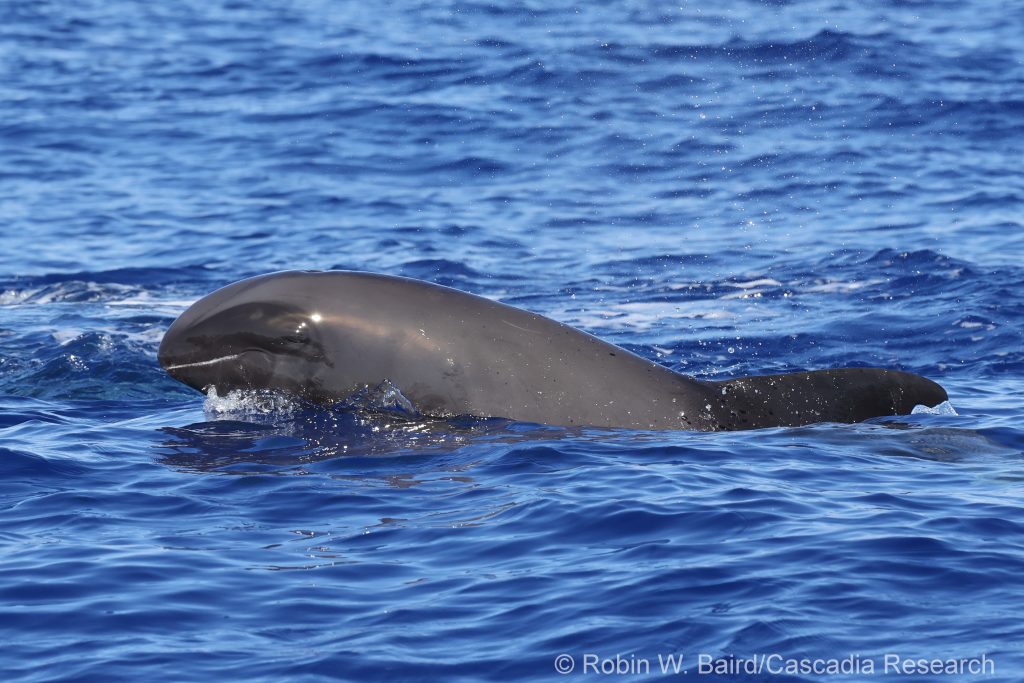
We took several thousand photographs from this group, for individual identification and to document body scarring.

On October 21st we made it far offshore, over the top of Indianapolis Seamount. Our hopes when getting that far offshore are that we will find pelagic false killer whales - no luck that day, it was the most interesting day of the trip for seabirds.
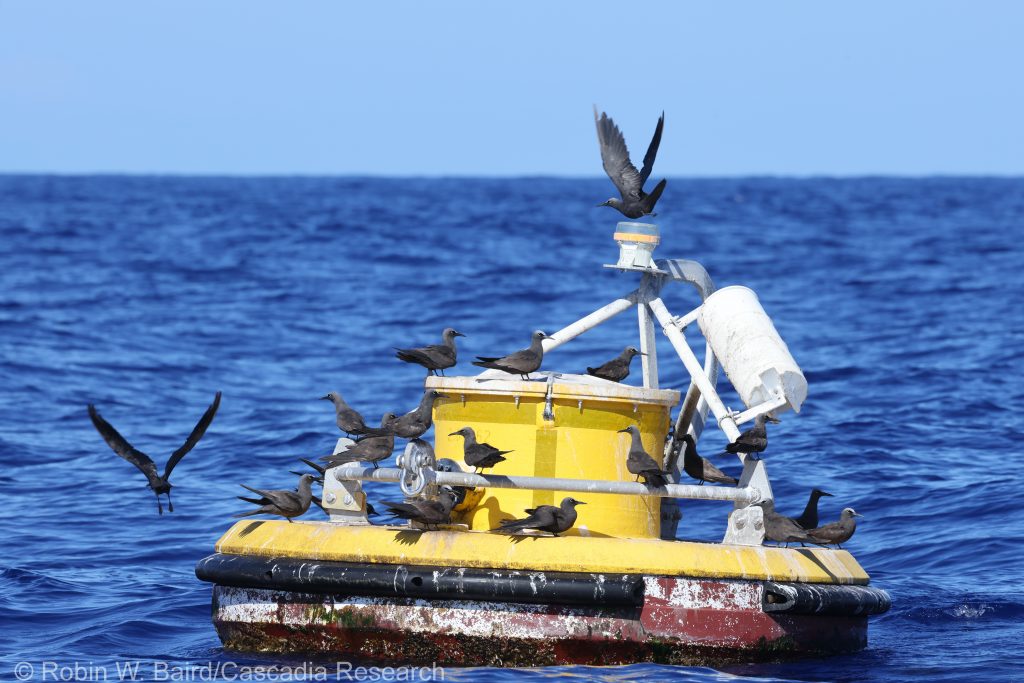
We stopped at the Tsunami buoy on the way out, and saw the largest group of Brown Noddies (Noio kōhā in Hawaiian) that we have documented around the islands.
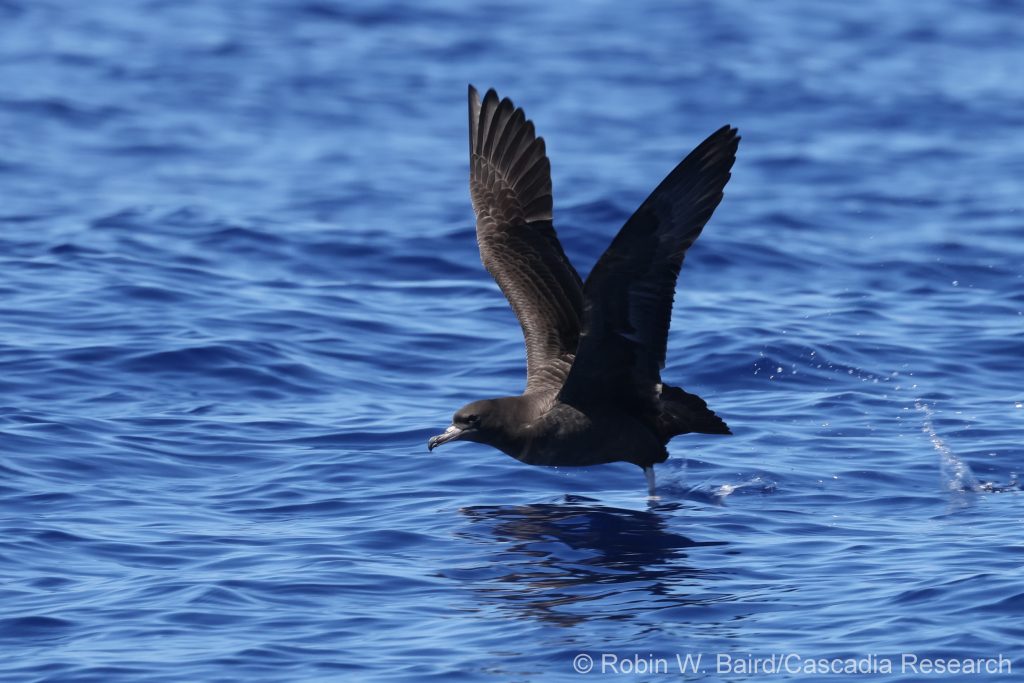
The highlight in terms of birds was a Flesh-footed Shearwater, a species we have never seen before in Hawaiian waters! This species is primarily found in the western Pacific, and the only other documented records in Hawaiian waters are in the Northwestern Hawaiian Islands or far offshore. Check out the Bishop Museum account for this species for more information. If you want to learn more about what species of seabirds we've recorded in Hawai'i, check out our seabird page.
October 19th update
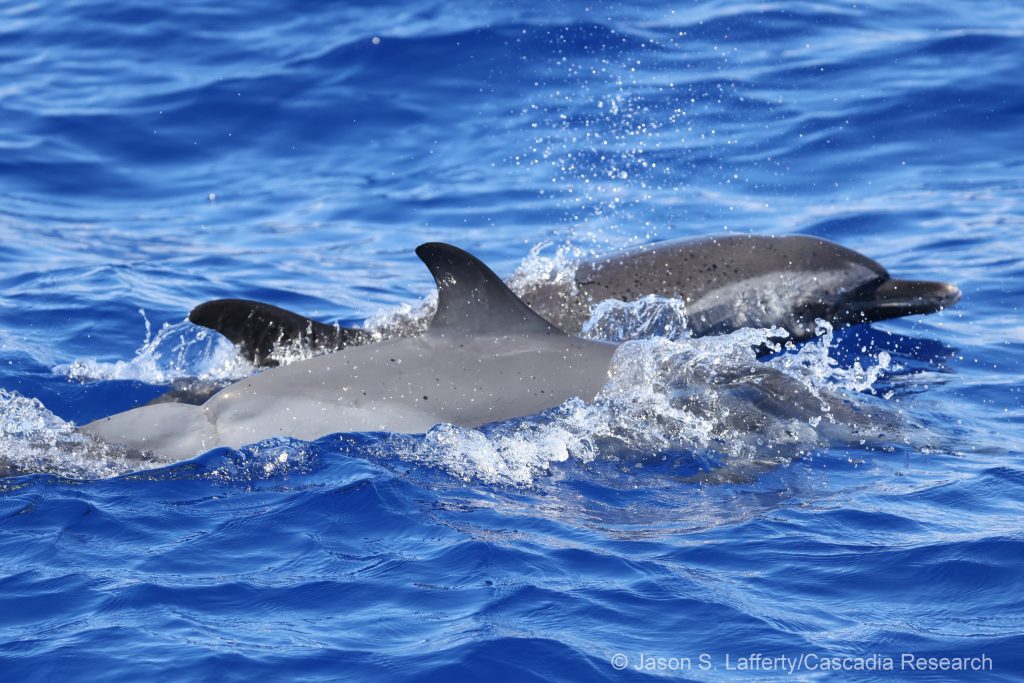
Today (October 19th) we encountered a group of pantropical spotted dolphins, and worked to get identification photographs of as many individuals as possible. We have a photo-identification catalog for this species (with over 700 individuals identified so far), and we are working to examine site fidelity and movements among islands. One of the individuals photographed today is a juvenile with a line wrap injury around the peduncle (the tail stock). These types of injuries occur when animals are either hooked on a fishing line and struggle against it or are wrapped up in a fishing line. In Hawai'i, fishermen often fish around spotted dolphins in order to catch ahi (yellowfin tuna), and the dolphins sometimes get hooked or injured as a result. We published a paper on this topic in 2020 - if you are interested in more details on these interactions you can find a copy at this link.
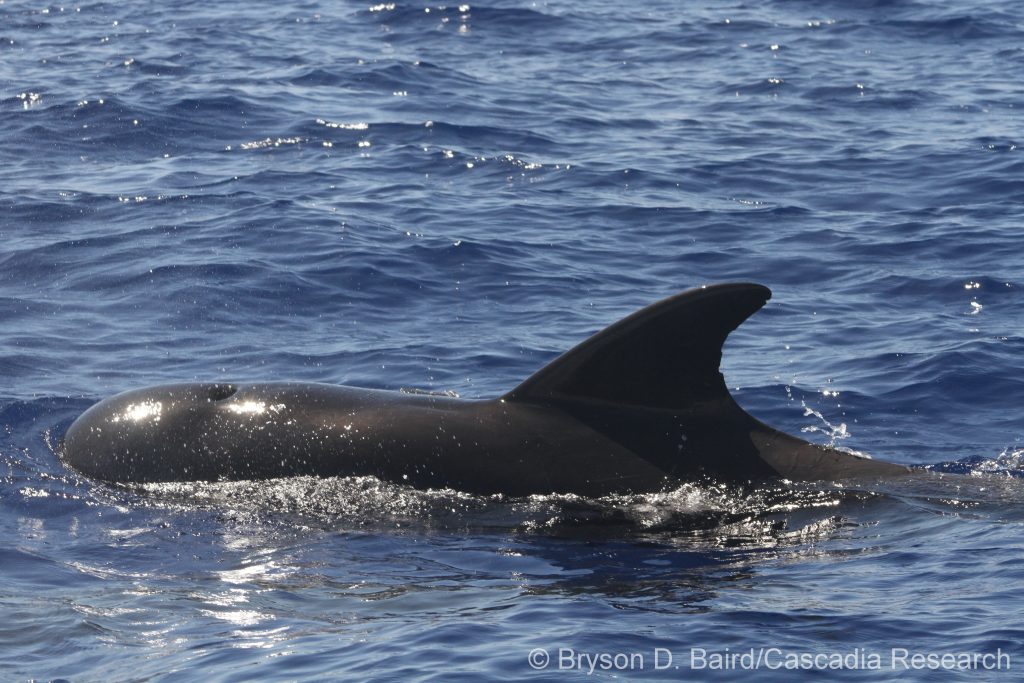
On October 18th we encountered two groups of short-finned pilot whales, and obtained identification photos of most of the individuals present. There is a resident community of pilot whales around Hawai'i Island. Pilot whales are the most frequently-encountered species of whale or dolphin in our study, representing almost a quarter of all cetacean sightings. If you want to learn more about pilot whales in Hawaiian waters, check out our pilot whale species page.
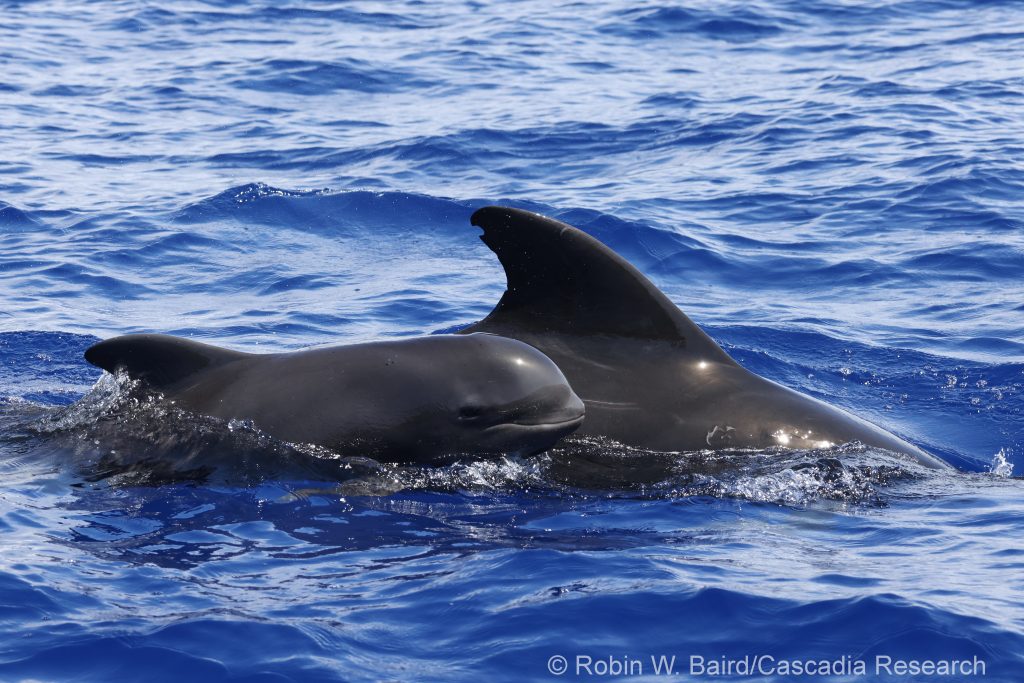
A mother and calf short-finned pilot whale seen October 18th.
October 17th update
In our first two days on the water we've had four sightings of four species of cetaceans off Kona. This pair of pantropical spotted dolphins was seen October 17th as we were heading out to Indianapolis Seamount. We have a small photo-identification catalog of this species so the photos will be used to determine if this is one of the resident, island-associated groups, or an open-ocean group.
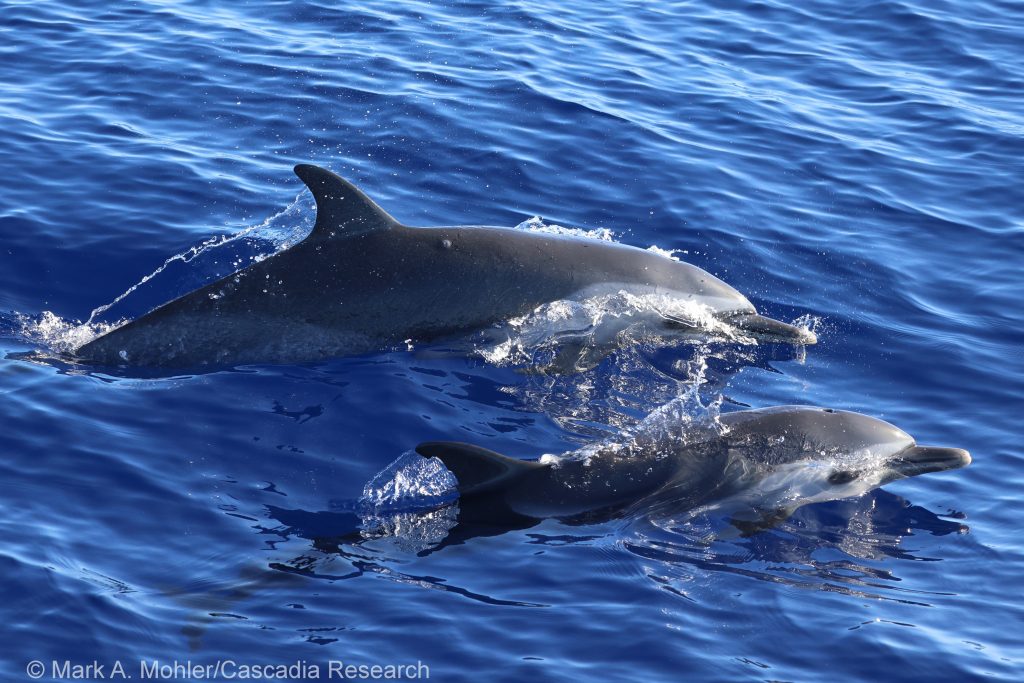
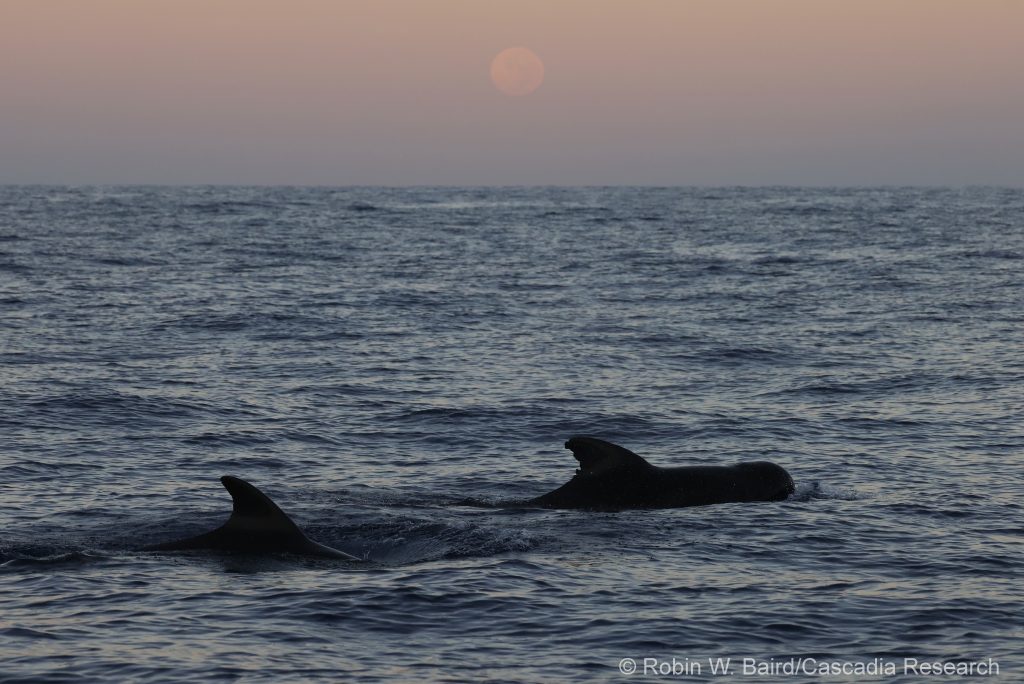
We also encountered a group of short-finned pilot whales early on October 17th. Photos will also be compared to our catalog for this species.
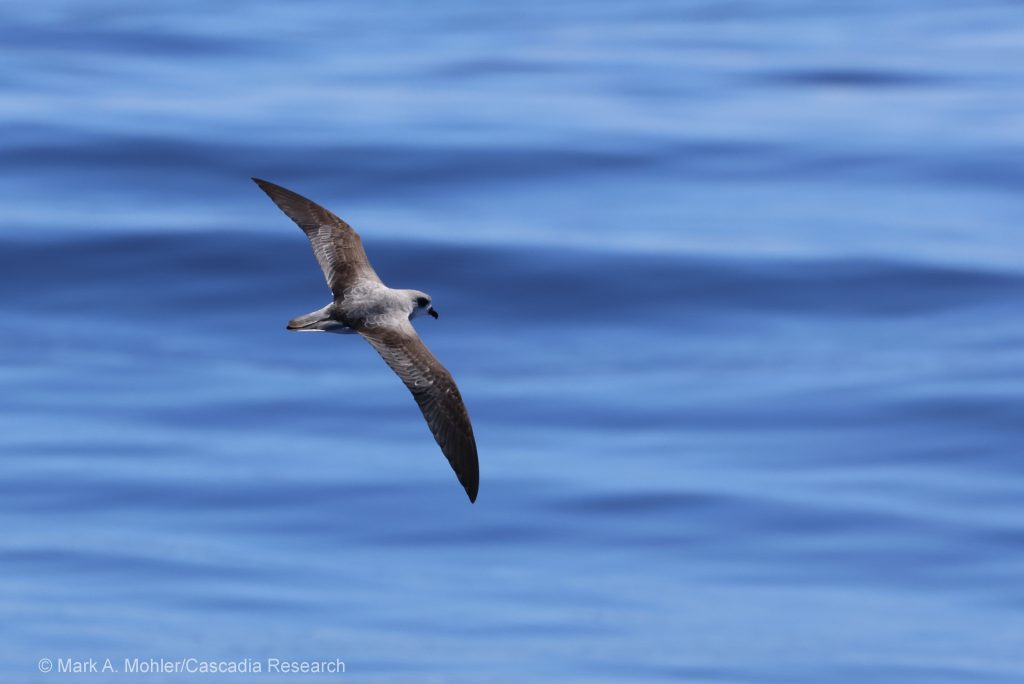
Our first day on the water was relatively quiet for birds, but we did encounter quite a few on our second day, including a number of Black-winged Petrels (such as the bird above). Also seen on October 17th were a White Tern, a jaeger, a Hawaiian Petrel, and a number of Sooty Terns.
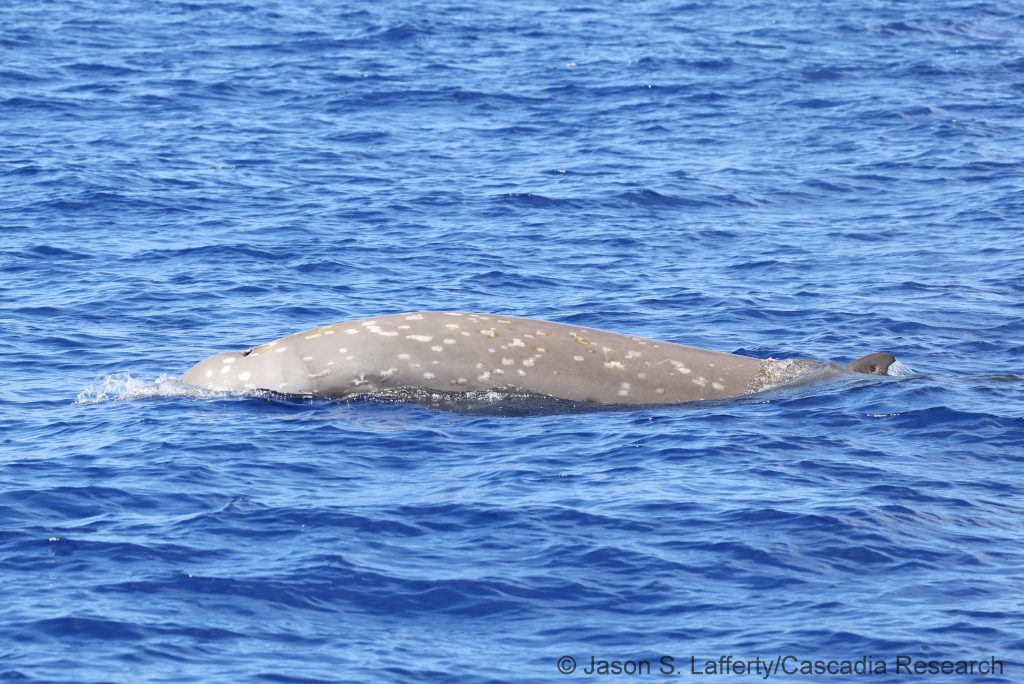
On our first day on the water we encountered HIZc100, the goose-beaked whale that we satellite tagged last November! This is the longest-transmitting LIMPET satellite tag we've had on any species, currently on day 344!